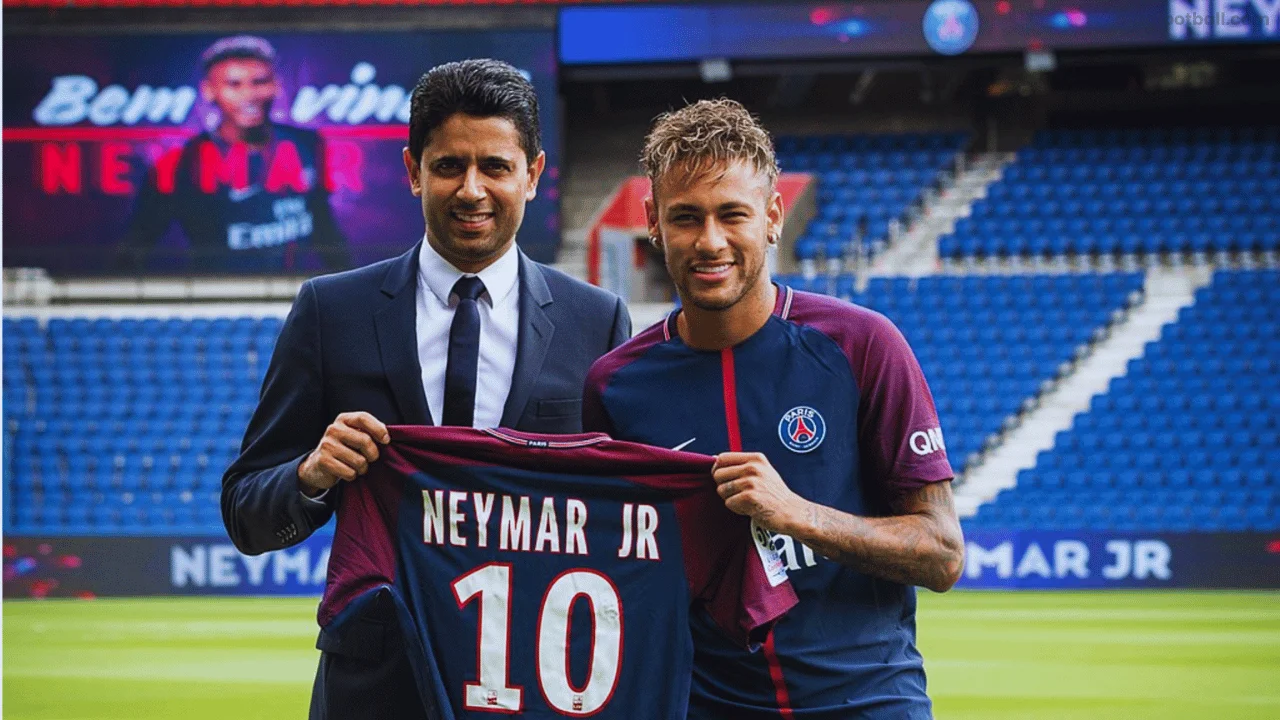Who is the Most Expensive Footballer in the World? An In-Depth Look at Football’s Biggest Transfers

Football, the world’s most popular sport, is not just about goals and championships. It is also a multi-billion dollar industry where top clubs invest heavily to acquire the best players. Over the past few decades, transfer fees have skyrocketed, with clubs spending astronomical amounts to secure football’s biggest talents. This raises the question: Who is the most expensive footballer in the world?
In this comprehensive article, we will explore the players who have commanded the highest transfer fees, discuss the reasons behind these record-breaking transfers, and analyze the impact these players have had on their respective clubs. We will also take a closer look at how the football transfer market has evolved and how certain factors, such as inflation, performance, and media hype, have driven the prices even higher.
Table of Contents
A Brief History of Football Transfers
Football transfers have been part of the game for over a century. In the early 20th century, transfer fees were relatively modest, and it wasn’t until the 1990s that fees started to rise significantly. With the influx of television rights money, sponsorships, and the globalization of football, transfer fees saw a steep incline. By the 2000s, clubs were regularly breaking their own transfer records to secure star players.
The Evolution of Transfer Fees
The most expensive footballers today are valued in hundreds of millions of dollars, a stark contrast to decades past. The rise in transfer fees can be attributed to several factors:
- Television Rights and Revenue: The commercialization of football has brought in huge sums of money for top clubs, allowing them to spend more on star players.
- Globalization of Football: The global reach of football means that top players are not only valuable for their on-field contributions but also for the global audience they attract.
- Sponsorship Deals: With more sponsors investing in football, clubs have more financial resources to acquire players.
- Inflation and Market Demand: The increasing value of football clubs and the competition for top players have naturally led to higher fees.
The Record-Breaking Transfers: Who Holds the Crown?
Neymar: The King of Transfers
To date, Neymar Jr. holds the record for the most expensive footballer in the world. His move from FC Barcelona to Paris Saint-Germain (PSG) in 2017 for a staggering €222 million (approximately $263 million) shook the football world. This transfer fee far surpassed any previous record and set a new standard in football’s financial landscape.
Neymar’s move to PSG was not just about his footballing abilities. The Brazilian star brought with him commercial value, as his name alone attracts sponsors and media attention. His skills on the pitch, including his dribbling, finishing, and flair, make him a standout player, but his off-field marketability also contributed to his exorbitant transfer fee.
Kylian Mbappé: The Young Prodigy
Another player who has made headlines for his astronomical transfer fee is Kylian Mbappé. In 2018, PSG made Mbappé’s loan deal from AS Monaco permanent for a fee of €180 million (approximately $214 million). At just 19 years old, Mbappé became the second most expensive footballer in history.
Mbappé’s combination of speed, technical ability, and maturity beyond his years made him one of the hottest prospects in world football. His performances for both club and country, including winning the 2018 FIFA World Cup with France, have justified his massive price tag. With time still on his side, Mbappé has the potential to surpass Neymar and set a new record in the future.
Philippe Coutinho: The Barcelona Gamble
Another high-profile transfer was Philippe Coutinho’s move from Liverpool to FC Barcelona in 2018. The Catalan giants paid €145 million (approximately $172 million) for the Brazilian playmaker, making him the third most expensive footballer at the time. Coutinho’s arrival at Barcelona was seen as a replacement for Neymar, who had left for PSG the previous year.
However, Coutinho’s time at Barcelona did not go as planned, and he struggled to replicate the form he showed at Liverpool. Despite his high transfer fee, his tenure at Barcelona was marked by inconsistency, leading to loan spells at Bayern Munich and other clubs.
Joao Félix: The Rising Star
In 2019, Joao Félix made headlines with his move from SL Benfica to Atletico Madrid for €126 million (approximately $150 million). The young Portuguese forward was seen as one of the brightest talents in European football, and Atletico Madrid paid a significant sum to secure his services.
Despite his young age, Joao Félix showed immense potential during his time at Benfica, and his technical ability, creativity, and vision on the field made him a highly sought-after player. His transfer to Atletico Madrid placed him among the most expensive players in football history.
Antoine Griezmann: The World Cup Winner
Another big transfer came in 2019 when Antoine Griezmann moved from Atletico Madrid to Barcelona for €120 million (approximately $141 million). The French forward had already established himself as one of the best players in the world, winning the 2018 FIFA World Cup with France and consistently performing at a high level for Atletico Madrid.
Griezmann’s versatility, work rate, and goal-scoring ability made him a valuable addition to Barcelona, although his move did not yield the success many had anticipated.
Factors Driving the High Transfer Fees
Player Performance and Marketability
One of the primary factors that contribute to a player’s high transfer fee is their on-field performance. Players like Neymar, Mbappé, and Griezmann are consistently among the best in the world, with their goals, assists, and overall contributions to their teams justifying their price tags. However, in modern football, marketability plays a huge role as well. Players who can bring commercial value to a club through sponsorships, social media presence, and global recognition are often more expensive.
Age and Potential
Clubs are willing to pay more for younger players who have the potential to develop into world-class stars. This is evident in the transfers of Kylian Mbappé and Joao Félix, both of whom were in their late teens when they moved for massive fees. Younger players represent a long-term investment, and clubs are willing to pay a premium for that potential.
Contract Length and Buyout Clauses
The length of a player’s contract can also impact their transfer fee. For example, Neymar’s record-breaking transfer to PSG was made possible due to his buyout clause at Barcelona. In many cases, players with long contracts or those who have a buyout clause will command higher fees, as clubs seek to either retain or cash in on their star players.
The Role of Inflation in Football Transfers
Football transfer fees have risen sharply over the years, and inflation plays a key role in these increases. A player who might have cost €50 million a decade ago could now command a fee of €100 million or more due to the rising costs in the football market. This inflation is driven by factors such as increased revenue from television deals, sponsorships, and the growing global fanbase of football.
Impact on the Clubs: Is It Worth It?
While some transfers have been incredibly successful, not all record-breaking moves have worked out. Clubs like PSG and Barcelona have spent hundreds of millions on players like Neymar and Coutinho, but the return on investment has been mixed. In Neymar’s case, his performances have been world-class, but PSG has yet to win the coveted UEFA Champions League, which was one of the main reasons for his transfer.
On the other hand, Philippe Coutinho’s transfer to Barcelona has largely been seen as a failure, with the player struggling to make a significant impact at the club. These high-profile transfers highlight the risks involved in spending such large sums of money on a single player.
The Future of Football Transfers: Will We See Another Record Soon?
As football continues to grow in popularity and revenue, it’s likely that we will see more record-breaking transfers in the future. Players like Kylian Mbappé, Erling Haaland, and Jadon Sancho are among the young stars who could command astronomical fees if they move to new clubs.
However, with the impact of the COVID-19 pandemic on club finances, some experts predict that the rapid increase in transfer fees may slow down in the short term. Nevertheless, the transfer market is still a crucial part of football, and top clubs will continue to spend big to secure the best talent.
Conclusion: Who is the Most Expensive Footballer in the World?
As of now, Neymar remains the most expensive footballer in history, following his €222 million move to Paris Saint-Germain in 2017. However, with the continuous evolution of the transfer market and the rise of young superstars like Kylian Mbappé and Erling Haaland, we could see a new record set in the near future.
The football transfer market is a reflection of the sport’s growing global appeal and commercial success. As clubs continue to compete for top talent, the question of who the most expensive footballer is will likely change again, but for now, Neymar holds the crown.



